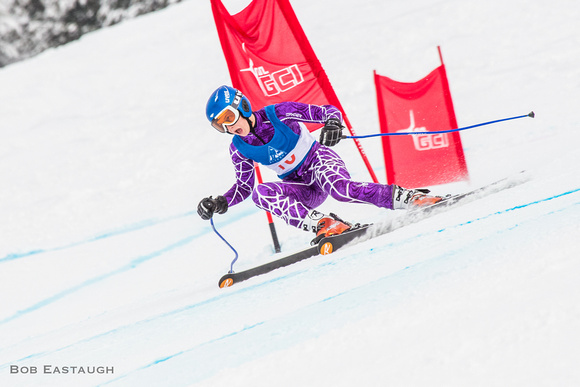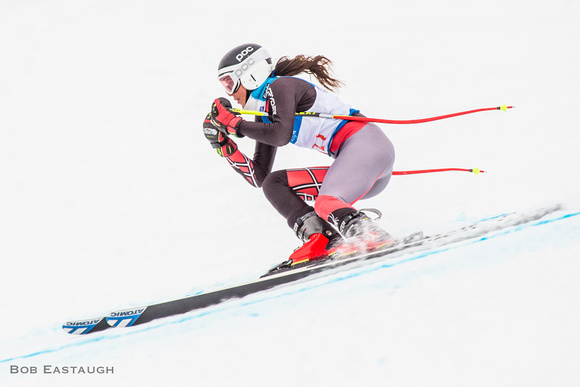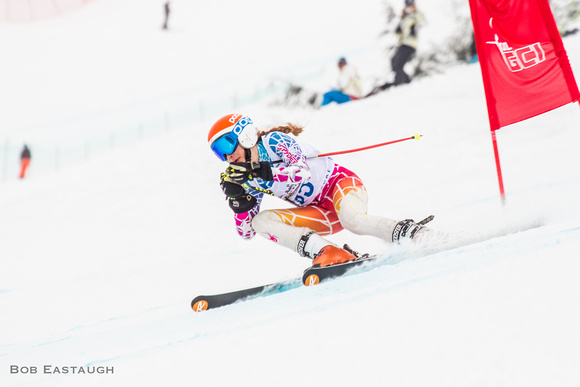Ski Racing, Again, Part 6; January 2018
There were downhill (i.e., speed) races in the Sierra Nevada between gold rush miners in the late 1800s and in the Alps probably from the early 1900s on. But modern alpine racing really resulted from the foresight of Arnold Lunn (later knighted for his efforts), who introduced modern slalom in the 1920s, on the high Alpine snow fields, first in Switzerland and then Austria, where eager Brits - like Lunn - essentially created the winter tourist trade. The Brits formed the Kandahar Ski Club, and the Kandahar races were and still are fierce and crazy events in various traditional alpine venues. Early racing capitalized on improvements - led by Austrians, mainly - in ski technique. The steep Alps required different technique than what had sufficed on gentler Scandinavian slopes. (The Scandinavians rapidly adapted, and have produced some of the greatest modern skiers: think Stenmark, Svindal, Paerson, Stein Eriksen.) That technique migrated rapidly to both the recreational world and the New World. Many who raced in college or for the USA in the 1930s were still racing all events as Masters in the 1970s and 1980s; they were by then in their 80s. Many of them were also 10th Mountain Division alumni who built US skiing after WWII. Some of the most interesting political by-play of the immediate pre-war days included the successful efforts to get Hannes Schneider out of Austria (he was a critic of Hitler), and the during-the-war efforts of many ex-patriot Austrian racers and instructors (Otto Lang, for example) to train the US Army ski troopers.
Beyond technique and politics, there was great romance about early racing and early ski writers happily explored the excitement of being in the mountains and competing. Sir Arnold Lunn wrote about it, as did his son, Peter. More about them later. In the US, Charles Proctor and Rockwell Stephens in 1933 published The Art of Skiing, writing that "To the confirmed ski runner [meaning skier], skiing is the greatest sport in the world." Proctor was a champion skier, and in discussing slalom training, he stated "There is no better way of training for a slalom than constant practice on slalom courses. Lay out your own slalom and run it until you are convinced that you cannot improve your time on it. Don't guess at your speed; carry a stop watch and time yourself." (The Art of Skiing, at 177)
By 1936, when Proctor and Stephens published Skiing, Fiundamentals, Equipment and Advanced Technique, Proctor had become somewhat more poetic: Chapter 1 was titled "Ski Fever." Speaking of ski growth as a "major social phenomenon," and noting that non-skiers consider the skier's enthusiams "a new form of winter madness," Proctor wrote "For ski fever when it strikes, strikes hard. Each new convert to the sport seems to live from December to May only for skiing, and to talk skiing from May to December." He asked, "what is the nature of this ski fever," and then answered: "The answer lies in two elements which seem basic in skiing's appeal. The sport is both an adventure and anaesthetic experience, and both elements are shared in equal measure by novice and expert alike." He called the adventure "uniquely personal." The skier "pits himself against snow and slope - the forces of nature" and is "utterly dependent" on his own skill and judgment. This presented a "distinctly personal conflict with the forces of defeat." Finally, Proctor asserted that "Speed itself is of course an adventure in almost any form, but the nature of skiing raises it to a definitely aesthetic experience. . . . [S]kiing speed has an intoxicating quality that nothing else seems to parallel. . . . The sustained devotion of the ski enthusiast" for the sport "is a natural result of the constant challenge presented by the endless variations of snow, slope, and speed." (Skiing, at 4-5)
Before there was slalom, there was downhill. Speed, few control gates, long skis. No slow, little turns. Although Proctor wrote of the skier pitting "himself" against the forces of nature, that was grammatical shorthand, not misogyny. There were fine female racers in the 1930s, and have been many, many since. And, as it happens, all of these racers from a 2013 downhill held in conjunction with the Western Region U16 Championships, were female.












Comments


After a lifetime of mainly expressing myself with words, my postings here will mainly rely on images. They will speak for themselves to some extent, but I'll usually add a few comments of explanation. I've taken photographs for decades, since the 1950's, inspired in part by my father's photographic skill. Four years of photo assignments and quality darkroom time eventually gave way to decades of casual and family picture-taking. I re-immersed myself when I left film and turned to digital.